|
The photo above of this forest is a precious reminder of how within us we have the codes to heal and recover if supported. Three years ago this area had been devastated and destroyed by a hurricane. Now we can see the new life, rebirth, that it has undergone…it is healing. We are nature and nature is within us. Just like in nature when we replenish ourselves with rich prana (life force) filled foods, nutrients, fresh air, and sunshine, we give ourselves the best chance to rejuvenate and thrive as well. I think of our prana/life force as a battery… do our everyday habits, decisions, thoughts and beliefs recharge or deplete us? What else can we do to energize our batteries? Yoga, of course. The many practices of yoga can help to keep our batteries, our life force, our health, our vitality, which in Sanskrit is called ojas, vibrant. Ojas Prana Tejas In Ayurveda, the sister science of yoga, there are three subtle energies… ojas (vitality), prana (life force), and tejas/agni (fire). In his book, Yoga and Ayurveda, author David Frawley writes that “Prana, tejas, and ojas resemble the concepts of chi, the Yang and Yin of Chinese medicine. Prana as the life-force and cosmic breath, is like the primordial chi, which is also related to wind and spirit. Tejas, as the power of will and vigor, resembles original Yang, which is the primal fire. Ojas, as endurance and stamina, resembles primordial Yin, which is the essence of water.” These three energies are alchemical and work synergistically, and can be integrated for optimal wellness and when we raise, balance, or improve one or all of them, we can influence and elevate the others. Let’s separate them to understand and explore them better. Ojas (Water) Ojas is believed to be responsible for vitality, strength, health, mental and emotional wellness. From the ancient yogic texts it is said that “a person with good ojas is calm and content and has strong immunity and endurance.” Ojas has been described as our body’s nectar, which has been created by all that we are incorporating and taking in. An individual can invigorate, repair, and protect their ojas by eating healthy, chemical free foods from nature, by drinking generous amounts of clean, hydrating water, by practicing both invigorating as well as restful yoga asanas (poses), pranayama (yogic breathing) to increase circulation, oxygenation, and to reduce stress, and meditation to be centered, grounded, and balanced. Ojas is said to be created when a person has not only eaten well but is also able to completely digest that which has been eaten, which in turn creates joy. In Ayurveda it is acknowledged that everything we take in – food, thoughts, experiences, and relationships – needs to be processed and how well we process these things significantly influences not just our bodies but our enjoyment (joy) of life. In a blog written by Melody Mischke, Abundant Energy –Unlocking Your Natural Vitality with the Wisdom of Ayurveda, she shares that Ayurveda identifies two types of ojas in the body; one of them is stable, superfine, and resides entirely within the heart, and the other circulates throughout the body. Since the most refined form of ojas resides exclusively within the heart supporting the heart can serve to nourish and protect our ojas too. Yoga poses like active and passive (restorative) backbends, chest, shoulder, and heart openers can create more vitality and heal our heart spaces. A quote by Hafez captures this well: “Be kind to your sleeping heart. Take it out in the vast fields of light… and let it breathe.” Prana (Air) From David Frawley, “Prana is the vital life force in all of us. It is the subtle vata or air element, and is responsible for life. We practice pranayama, or breathing exercises, to tap into this energy within our bodies. Although identified with the breath, prana is also responsible for the processes of circulation, digestion, and excretion.” From Sankrit, the ancient language of yogic tradition, “an” meaning movement and to breathe, and “pra” meaning forth, prana means “breathing forth”. Prana is believed to flow in and out of the body through the breath. Becky Miscke says that “prana is carried on and stimulated by the breath, but it is not the breath. The foods we eat and the water we drink also contain prana and also serve to replenish our own. In this way, ingesting foods and drinks that are healthy, fresh and full of prana themselves serves to nourish this vital force within our bodies- as does purposeful, mindful breathing. The channel system that moves prana through the body is rooted in the heart so, as with ojas, tending to the heart center also supports prana.” Appreciate this reminder that everything is truly connected and one supports the other. It is said that prana likes to move due to its relationship to the vata energy. Vata can be unstable, easily agitated, or very sensitive, so when we move the body with our yoga practice we also can transform the vata energy, and create more fluidity and flow in our systems. In yogic tradition it is believed that prana flows through energy channels called the nadis. The three main nadis are the Ida, the Pingala, and the Sushumna. This chart below, from the Huffington Post, is a good graphic illustration of these: It is also believed that the seven chakras run along the Sushumna and that the prana (life force energy) flows through the chakras and creates emotional and physical feelings and experiences. Through yoga and meditation you can expand your chakras by increasing the flow of vital prana in your body which supports optimal wellness in the body and mind.
Tejas (Fire) Tejas is the subtle energy of agni and the pitta dosha that transforms matter into energy and consciousness, and is related to the fire element. Tejas is translated from Sankrit as illumination or fire. Fire in Sanskrit is agni. In an article by Dr. Swami Shankardev Saraswati, Improve your Digestive System- Balance your Agni, he shares that the word agni is related to the Latin word ignis, which is the root of the English word “ignite”. He also writes that “Agni is the element that keeps our intelligence sharp, clear, and bright. It maintains our intelligence by enabling us to digest information from life so that we can know what is good for us and what is not.” Tejas/fire is related to transformation in your yoga practice and in your life. Since eighty percent of our immune system is in the digestive tract, Ayurveda puts a lot of attention on how well we are digesting the food and emotions we take in. If digestion is sluggish, often herbs and spices like cumin, ginger, and chile peppers are recommended to stoke the digestive fires. Tejas is the solar energy of the body, so we can practice specific yoga sequences like Sun Salutations and other asanas to boost circulation and strengthen, stimulate, and activate digestion and the solar plexus, or third chakra, which is considered the power center of our bodies. Specific pranayamas like diaphragmatic breathing, which increases metabolism, and Kapalabhatti pranayama, also called breath of fire, which focuses on short forceful exhalations can kindle and ignite the tejas energy. Another pranayama, Surya Bhedana, which means “ piercing the sun,” involves breathing through the right nostril (Pingala nadi),the solar channel, and exhaling through the left nostril (Ida nadi), the lunar channel, which clears the surya nadi and generates heat. David Frawley explains that in Ayurvedic tradition, the subtle energies within the body are fluid and dynamic. Blockages within the energy channels and energy centers can compromise health and wellness. The inner practice of yoga is a synergy of these three vital essences and the balance of preventing excesses or deficiencies for vitality and for tapping into our innate healing force.
0 Comments
“Working hard is important, but there is something that matters even more: believing in yourself. “ J.K.Rowling (Harry Potter) Life often presents us with many twists, turns, ups and downs. Having the resilience, strength, and ability to navigate our way takes skill, persistence, belief, and faith in ourselves. Yoga provides many tools to empower us… asana (the physical practice), dhyana (meditation), pranayama (control of the breath), mudras (energetic gestures), and mantras (a word, phrase, or sound that keeps the mind focused). Regularly taking the time to cultivate these practices is called a sadhana and this work keeps our body, mind, and spirit strong, disciplined, and powerful. From yoga philosophy we can also gain wisdom and insights- the Sanskrit word shraddha from Pantanjali’s Yoga Sutras (1.20) is a concept we can employ. An article written by Rolf Sovik, “Finding Faith in the Spirit of Yoga,” from Yoga International, breaks down this word from two Sanskrit words shrat (shrad), which means “truth” or “faithfulness” and dha which translates to “to put or place”. T.K.S. Desikashar, a yoga teacher considered by some to be the father of modern yoga, describes shraddha as “an unshakeable conviction in our journey.” When we have this conviction, we create the belief that we can overcome obstacles and bring about positive outcomes. In a video from Yoga Journal, yoga teacher Coral Brown shares that “Your shraddha is what defines you as being you. One could say your shraddha is reflected in your virtues and values, it is what defines your sense of Self, your character. Your character or your nature, determines your destiny and it shapes how you perceive, live in, and are motivated in the world.” According to Rolf Sovik, “this kind of faith is not a secular concept,” but rather a strong knowing that based on doing this work we can experience first hand the results of the practice. B.K.S. Iyengar, a yoga luminary who contributed greatly to the physical and the spiritual aspects of the practice teaches… “shraddha is a simple faith that conveys mental and intellectual firmness.” Often when we are challenged we can become doubtful, compare ourselves to others, question our gifts and talents, perhaps even consider giving up or giving in. The myths and poses of yoga offer more insights and inspiration to stay the course and soldier on. Myth Many yoga poses we practice are rich in deeper meaning and connected to higher truth, wisdom, and guidance through myth. The yoga pose hanumanasana from a mythic perspective personifies shraddha. In a blog “Hanuman: A Leap of Love” written on Gaia.com, Sianna Sherman says “The stories and legends of yoga call us home to our own heroic heart. Each of us is on a hero’s or heroine’s journey undergoing various stages of initiation and alchemical soul growth. The language of the soul is metaphoric and mythic versus rational and linear. Stories are our gateways for embodied wisdom to arise in us and help us to navigate the challenges in our lives with curiosity, inquiry, and in the spirit of play.” Actually many myths of all cultures and traditions are based on the “hero’s journey” and how the hero (us), by overcoming and rising above difficult situations and obstacles, grows and ultimately becomes stronger, wiser, and even reborn in this process. Joseph Campbell, author and legendary mythologist, who wrote The Power of Myth and many other books on this subject said this- “It is by going down into the abyss that we recover the treasures of life, there lies the treasure.” Another of Joseph Campbell's quotes… “Opportunities to find deeper powers within ourselves come when life seems most challenging.” The yoga pose of hanumanasana (the full splits) with one leg leaping forward and the other leg stretched back is rooted in the mythical story of Hanuman a monkey and the servant of Lord Rama who demonstrates his complete devotion for Rama through several brave and amazing feats in the epic poem/tale known as the Ramayana. In an article written by Laura Rothstein at yogasphere.com she summarizes the part of the story from the Ramayana that relates to overcoming our fears/having faith in ourselves… “During a horrific battle in Southern India, Rama’s brother Laksmana is gravely wounded. His only chance for survival is to be treated with a very specific and rare herb that is found at the top of the Himalayas. Ram is distraught and has little hope that someone could make it to the Himalayas, find the herb, and return back in time to save his brother Laksmana. This impossible task falls upon Hanuman as Rama’s servant because he is a son of the wind god Vayu, a powerful and intelligent monkey god, emblematic of devotion and thought by some to be the reincarnation of Shiva as well. Taking a mighty leap of faith across the ocean from the south of India to the Himalayas, Hanuman finds himself unsure of the exact location of the herb. He is innately guided to get ‘bigger around the situation’ rather than ‘getting lost in finding the exact herb’ and picks up the entire mountain range and carries it over his head while he leaps back to the battlefield. The healing herb is quickly located by experts and Laksmana is saved. Later in the Ramayana , Hanuman makes another great leap from India to Sri Lanka to reunite Rama and his beloved wife Sita. In the Ramayana there is an affirmation about Hanuman by Jambavantha, the King of the Beaqrs, honoring his resourcefulness (and shraddha) : “You are powerful as the wind; You are intelligent, illustrious, and an inventor. There is nothing in this world that is too difficult for you; Whenever stuck, you are the one who can help.” For us in the 21st century, in our scientific, sophisticated, technology driven world, myths and legends may seem irrelevant, perhaps even childish, but if you look at the literature and films that we love, myth and specifically the hero’s journey, are a significant theme (Harry Potter, The Hunger Games, Spiderman, Star Wars, Lion King, Alice in Wonderland, The Wizard of Oz, Lord of the Rings, Matrix and so many more). Why does the hero’s journey and myths resonate so deeply with us and why are they important? According to Lorraine Caplan, teacher and educator, “Myth and legend are important today for a number of reasons. They have value as literature, offering timeless and universal themes. They give us insight into other times and places, and they help us see how much humankind had and has in common.” It seems these stories perhaps awaken something intrinsic inside of us that inspire. Asana Practicing yoga regularly challenges us to have faith and belief in ourselves, to be in our own wisdom, power, and to develop strength. Often we run up against our limitations- some real and some imagined. We may think or really have too little or too much flexibility, injuries, pain, or physical issues that restrict us, deeply embedded beliefs or patterns that prevent us from straying too far out of our comfort zone. By stepping in, stepping up to the many challenges we are led into evolution, it is a dance of venturing forward, stepping back, and hopefully finding both faith along the way and our way out of or around situations or circumstances that block our path. Hanumanasana, in particular, is a challenging pose that can bring up insecurities we may have because it requires strength, flexibility, and stability to split the legs front to back and yet also keep the torso steady vertically over the pelvis. To accomplish this you need to have open hamstrings (muscles on the back of your thighs), hip flexors (muscles on the front of your hips and upper thighs) and quadriceps (muscles on the front of your thighs), abdominals, knee flexors and calf muscles, and shoulders, as well as a stable pelvic floor, transverse abdominis muscles (core), hip stabilizers, and internal rotators of the leg. Like any heroic journey we have to prepare with mindful sequencing … to lay the groundwork we can use poses like Anjaneyasana (Low Lunge), Supta Padangusthasana (Reclining Hand to Big Toe Pose), Supta Virasana (Reclining Hero Pose), Upavista Konasana (Wide Angled Seated Forward Bend), Viabhadrasana I (Warrior 1), Utthita Trikonasana (Extended Triangle Pose), Pavrivrtta Trikonasana (Revolved Triangle Pose), Janu Sirsasana (Head to Knee Forward Bend), Backbends Bhujangasana (Cobra Pose)/Urdhva Mukha Svanasana (Upward Facing Dog Pose), Virabhadrasana III (Warrior 3), Utthita Hasta Padangustasana (Extended Hand to Big Toe Pose). We can use props like blankets, bolsters, and blocks to help make the pose more accessible. We can use the Half Hanumanasana (Half Splits) as a warm-up for or instead of the full splits to evoke the same energy and emulate the fearlessness of Hanuman. Whether we are able to practice the Full or Half Hanumanasana (or someplace in between) makes no difference because it is in the process that we are developing insights, and make progress. The benefits are available to us every step of the way by simply working on and preparing for the pose. It is in the work, the exploration, that we expand and see with greater clarity. Shraddha, our faith and belief in ourselves, comes into play here too- we have no need to push past where we are ready to go, to prove anything to ourselves or to others and always we want to remember that the poses themselves are metaphors, tools for us to become the best version of ourselves and they are the journey not the destination. Rebecca Pacheco writes in her book Do Your Om Thing “Doing a full split in class is wonderful but it pales in comparison to the importance of taking leaps of faith, whether small or large, daily life. Mudra From Yoga Journal a mudra is a “seal”, “gesture”, or “mark”. Yoga mudras are symbolic gestures often practiced with the hands and the fingers and they facilitate the flow of energy in the subtle body and enhance one’s journey. Diane Clarke, in her book “Mudras -40 Powerful Hand Gestures to Awaken Your Chakras and Unleash the Healing Power of You,” writes that mudras are symbols that seal and stimulate the energy points between fingers. Our hands are an extension of our heart and are closely connected to our brain. This infers that every part of our hand has a reflexive connection to our brain making it capable of engaging and influencing specific aspects of our brain. Practicing symbolic hand movements or mudras can help align our thought process as well as revive our state of inner consciousness. She continues … mudras work at every level of our being-mind, body, spirit. With regular practice you can improve your health, and potentially heal illness, improve immunity, increase stamina and energy, reduce mental restlessness, stress, and anxiety. When woven into our yoga practice, ideally during or just after meditation, according to Diane Clarke, these mudras can help us to stay focused on and amplify our intentions making them more attainable and sustainable. The mudra pictured above, the Fearless Heart Seal, would, in particular, align with and enhance the aim to have faith, belief in ourselves (shraddha) and to cultivate the discipline, strength, and the courage needed to overcome challenges, roadblocks, or deeply embedded habits that prevent us from reaching our highest potential. The picture, explanation, and directions listed below are from an article written by Sianna Sherman for Yoga Journal.com. Abhaya means “fearless” and hridaya means “heart”, “center or core of something”, or “essence”. This mudra helps to strengthen a fearless connection to your heart’s truth and grow our courage to follow that truth. Directions from Yoga Journal on how to do this mudra: Abhaya Hridaya Mudra Bring your hands together in Anjali Mudra (Prayer Mudra). Cross your right wrist over your left wrist in front of your sternum, with the palms facing away from each other. Bring the backs of your hands together. Wrap your right index finger around the left index finger, then your right middle finger over your left, skip over the ring finger and wrap your right little finger over your left. Draw the mudra to the root of your heart, at the base of the sternum. Hover the Courageous Heart Mudra in front of and around your heart. Stay here and meditate on having the courage to keep your heart open and loving, especially during those difficult times in your life when fear, hate, or anger pull you away. Benefits ● Connects you to your heart's truth ● Builds courage to follow your heart ● Rejuvenates one’s vital force ● Reduces fragmented thoughts ● Reduces scattered energy ● Imparts a powerful sense of vitality and calm https://www.yogajournal.com/poses/abhaya-hridaya-mudra Mantras
Mantras are another yogic way to harness our intentions, to manifest change, and to support our efforts to thrive. A mantra can be an affirmation such as I am strong, I am determined, I believe in myself. The mantra you choose can be repeated silently or said out loud together as a group before practice, during the asanas (the physical postures), or as we are finish class and head back into our lives or anytime we need bolstering up or fortification. We can also write them down and put them someplace we will see them keep them in our awareness. These mantras can reinforce and guide our actions, keep us heading in the right direction, and be a practice both on and off the mat. Repeating a mantra in the ancient language of Sanskrit, like the Hanuman mantra above, can also be powerful according to Dr. David Frawley, founder and director of the American Institute of Vedic Studies. Sanskrit mantras are said to have the ability to help alter our subconscious impulses, habits, and applications as well as direct the healing power of Prana (life force energy) to energize and access higher states of consciousness. The Hanuman mantra would certainly be a good fit for overcoming trials and becoming the hero of our own story. A translation of this mantra from Yogapedia.com: Om and salutations to Hanuman, The embodiment of pure devotion. May I be blessed with victory, success, strength, stamina, and power. Mantras can also be chanted and/or sung. Here is a yoga playlist I created with a Hanuman chant and this theme of straddha/faith in ourselves weaved in. https://www.meganmilleryoga.com/music.html - Hanuman playlist A Resilient Spirit All of us swim in uncharted waters, the changes we have seen and will continue to see are unprecedented and are happening so rapidly and demand so much from us. With everything around us constantly shifting, information being introduced, validating and invalidating what “we know”, so many opportunities to compare and judge “how we measure up”, we must develop a strong sense of ourselves, and listen to our inner wisdom and guidance and cultivate a resilient spirit. Hanuman once again is an example of this spirit. Rebecca Pacheco writes… "To know a sliver of Hanuman’s story is to know that he is devoted, strong, and true. Nothing stops him. Nothing fatigues him. In his faith, he finds boundless energy and a sense of safety. He reminds us that we’re more likely to leap when we believe in who’s jumping (ourselves!)." Throughout our lives we will be challenged. We will go through transitions... some expected, some out of left field, some welcome, some unwanted, unsettling, or even difficult. To journey with a heroes heart we practice, develop, and embrace a fearless, tenacious, confident, and resilient spirit. “Believe in yourself and all that you are. Know that there is something inside of you that is greater than any obstacle.” Christian D. Larson Ready Set Play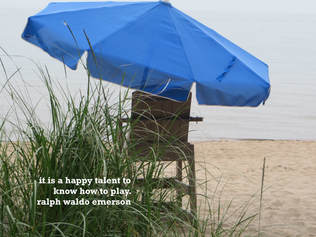 In Sanskrit the word lila has been translated to mean play, amusement, ease or facility in doing something. It is seeking and embracing grace, beauty, or joy. It can also mean that everything in the universe is a divine play, and we are participating in its unfoldment. Seeing life from this perspective can shift us in believing that life is happening TO us, instead of FOR us, and that there is much magic and wonder in the way that seemingly unconnected, perhaps even “bad” things, actually precisely come together and create beautiful tapestries and experiences for our greater good. To actually step back and “watch”, allowing ourselves to go with the flow, can take a big leap of faith, but is well worth the lesson and the outcome. Play by its nature is free, joyful, and spontaneous. The National Institute of Play defines play as an activity that’s done for it’s own sake. It’s voluntary, pleasurable, and offers a sense of engagement with whatever you are immersing yourself in. Time stands still, our bodies, minds, and spirits relax, we are absorbed and feel focused, present and uplifted. These same gifts are typically experienced on our yoga mats as well. Taking time to play is vital for everyone young and old... studies have shown that it increases well-being, improves mood, boosts creativity, and work efficiency. It is also very effective in reducing stress and therefore the many negative effects that stress can have on us physically and emotionally. Stress is a root cause of nearly all illness and can contribute to memory issues, depression, anxiety, and anger. Play has also been shown to slow the aging process, lower blood pressure, reduce stress hormones, increase muscle flexion, and boost our immune response. Despite the many benefits of play, it can be a challenge to actually take time for it, especially with the many responsibilities, long “to do lists”, and jam- packed schedules of our modern lives. We spend a lot of our time striving, achieving, wanting to have something to show for ourselves, yet summer especially beckons us to relax and make time to enjoy many fleeting things- the warmth, the light, being outdoors, longer days, endless opportunities to do, see, visit, and yes -- play. In Yoga Sutra 1.2 Patanjali defines yoga as that which “quiets the whirlpools of the mind”. Ideally, when we are on the mat, we put all of our attention into our practice. We shift from doing to being, from distraction to awareness, from over-thinking to being mindful. Hopefully some of our many ambitions for perfection, achievement, and success can take a vacation too. If they can’t take a complete vacation, at least we can become aware of how these demanding, unforgiving, comparative, and even critical expectations, can prevent us from being content, patient, or compassionate toward ourselves. Having this awareness and the recognition of its negative impact on happiness, we can begin to shift, re-frame, and appreciate that we are all a work in progress -- growing, learning, and transforming all of the time. In fact, yoga, play, and new experiences create the birth of new neurons, which can reshape and rewire the brain. This concept is known as neuroplasticity and it refers to the brain’s ability to reorganize itself both physically and functionally, throughout our entire life, due to environment, behavior, thoughts, emotions, and beliefs. This greater awareness also helps us to see that there is no race to the finish line, that constant self-criticism rarely leads somewhere positive, and that being able to lighten up, and have a greater sense of play and wonder, could actually help us create, envision, and excel in ways that are more satisfying and that resonate with our authentic desires and deeper selves. This goes along with Pantanjali's writing in the Yoga Sutras -- “When you are inspired by some great purpose, some extraordinary project, all of your thoughts break their bonds. Your mind transcends limitations; your consciousness expands in every direction; and you find yourself in a new, great and wonderful world. Dormant forces, faculties and talents become alive and you discover yourself to be a greater person than you ever dreamed yourself to be.” Go play! Choosing Joy  Poised at the edge of 2017, December feels like a kind of twilight…the dusk to the dawn of the year ahead, and an auspicious time to access where we have been and where we are heading. Yoga helps us to cultivate greater clarity so that we have the ability to sort through and access the things in our lives that support our health, happiness, and well-being, and those that simply don’t. Ideally, we can then choose more of what lifts us up, what brings us joy. The fact that we are making choices all day, every day is a powerful and influential thing. While there are certainly many unscripted, unavoidable, unexpected twists and turns for all of us, as we traverse the ups and downs, we choose our reactions or our non-reactions, our inner landscape, our glass is half full or half empty view. Our mindset, our beliefs are driving our train -- either heading us in the right direction, de-railing us, or even moving us backward. We become what we focus on, and what we practice. In the early yogic text of the Brihadaranyaka Upanishads – As is your deepest driving desire, so are your thoughts. As are your thoughts so are your words. As are your words, so are your deeds. As are your deeds, so is your destiny. The New Year is often a time of resolutions to be better, to do better, to change -- hopefully for the better. In yoga, we have sankalpas which can be a heartfelt desire for healing, happiness, wisdom, enlightenment, or a specific intention or goal. On his website, Parayoga.com, Rod Stryker describes a sankalpa: “A Sankalpa should be a short and positive statement, which addresses a deep and significant urge. Ask yourself what is the one thing that if I were to have or be, it would improve my whole life– what one thing or quality will have the greatest possible positive impact on your life and on the life of others.” In an in depth article on sankalpas from Yoga International, Rod Stryker clarifies more: kalpa means vow, or “the rule to be followed above all other rules.” San, he says, refers to a connection with the highest truth. Sankalpa, then, is a vow and commitment we make to support our highest truth. “By definition, a sankalpa should honor the deeper meaning of our life. A sankalpa speaks to the larger arc of our lives, our dharma—our overriding purpose for being here.” The sankalpa becomes a statement you can call upon to remind you of your true nature and guide your choices. Interestingly we want to phrase these intentions in the present tense as if they are already true. ‘I am... joyful, calm, healthy, strong,’ or ‘I have…peace within me,’ or one word like brave, confident, connected, or intuitive. The sankalpa becomes the seed that we plant. To water, nurture, and help it grow, we repeat it regularly and often to ourselves for reinforcement. It could be repeated in the morning when waking up, when going to sleep, in the shower, at the beginning or end of a yoga practice as a mantra, or when meditating. Write it and post it where it will be a reminder to download it, to live it. If we begin to falter, returning to it strengthens our intention. Synergistically look for quotes, articles, books etc. that support your sankalpa. “Coincidently” these sources will start to flow more and more your way. As we step into 2018, our heartfelt intentions, our sankalpas, are our destiny. We can all explore what, where, and how we are choosing to live our lives. When we understand that these choices are linked to our beliefs, our histories, our defaults and that making a shift to choose more from our deepest self (which can be accessed through our yoga practices) we can become more rooted, grounded, and resolved to follow our hearts. My friend and fellow yoga teacher Susan read the following quote by Abraham Joshua Heschel in class one day earlier this year and it resonated deeply with me—“Our goal should be to live life in radical amazement…get up in the morning and look at the world in a way that takes nothing for granted. Everything is phenomenal; everything is incredible; never treat life casually. To be spiritual is to be amazed.” A beautiful, wonder-filled way to see and choose to experience life. Wishing all a healthy, happy, intention filled New Year.  As the days ahead become cooler, crisper, darker, it can be common to begin to mournfully resist the change of the seasons, the inevitable cycle of leaves falling, lazy summer days becoming a memory, the chilly mornings a harbinger of what lies ahead (at least for some of us). For me personally, it is always quite a struggle to let go, to be “here”, to resist attachment and the desire for endless summer. Many spiritual traditions and guides have emphasized the harm we bring upon ourselves by wanting things to be other than they are, to fruitlessly attempt to control things in our lives, and to embrace what is un-embraceable, to resist as opposed to flowing with life and its constant changes. John Izzo, in his wonderful book, The Five Thieves of Happiness, writes, “A principle to bear in mind is that almost all internal suffering comes from resistance to whatever is true in any moment. It is not the happenings in our life that lead to unhappiness but the desire to control them rather than accept with passivity. Don’t confuse acceptance with passivity. Remember intention without tension, focus without attachment, wanting or trying to achieve is not the source of unhappiness, but the desire for control of the outcome is.” A yogic concept that helps us navigate being open to “what is” comes from the fifth yama (universal ethical observances), aparigraha, in Pantanjali’s Yoga Sutras. Aparigraha can be translated as nongrasping, acknowledging abundance, non-attachment and non-possessiveness. B.K.S. Iyengar writes “By the observance of aparigraha, the yogi makes his life as simple as possible and trains his mind not to feel the loss or lack of anything. Then everything he (she) really needs will come to them by itself at the proper time.” When we use the tools available to us on the yoga mat and incorporate yoga philosophy to see more clearly how we may not be practicing abundance in how we think or talk, to or about ourselves, how we focus on our limitations as opposed to our strengths, when we see only how far we have to go, rather than how far we’ve come, when we compare our bodies, our poses, our knowledge wistfully to another, when we wish we were younger, more flexible, had longer arms or legs, were thinner. Once we have this awareness on the mat, we can then begin to shift it off the mat by becoming aware of our tendencies -- to see the glass as half empty not full, seeing our obstacles, challenges, struggles as the enemy instead of an amazing friend that will teach us what we need to know, make us stronger, wiser, or more compassionate, finding it difficult to have trust that things are happening at the perfect time and exactly as they should for our highest good, being so attached to our expectations and the inevitable disappointments instead of being open to the potentiality, to the possibility. How do we learn to live more in the present moment and surrender to what is? The Yoga Sutras again offers a tool we can practice…pratipaksha bhavanam, the practice of cultivating the opposite. Literally like flipping a switch- catch yourself thinking a negative thought, make it a positive one. Find yourself holding onto to something with both hands, drop it like a hotcake. The idea here, and it’s quite an effective one, is that the energy of doing the opposite holds much less resistance than trying to break a habit that doesn’t serve us. Short, sweet, simple- do the opposite. Awareness is key to making any long term shifts, so first notice how you may be labeling yourself weak, then think of a situation or a pose where you worked to become stronger. If your “go to” habit is to give up right away, try to be more persistent. If your feelings are easily hurt, instead be more resilient. If you criticize yourself for making a mistake, instead applaud yourself for some way the mistake enlightened you or changed you in a positive way. If you catch yourself repeatedly ruminating about a situation you wish had turned out differently, switch gears and think of another situation you successfully navigated. And if you, like me, resist the end of summer, acknowledge abundance, and flip the switch to think of something you really love about fall. “Be content with what you have; rejoice in the way things are. When you realize there is nothing lacking, the whole world belongs to you.” Lao Tzu. 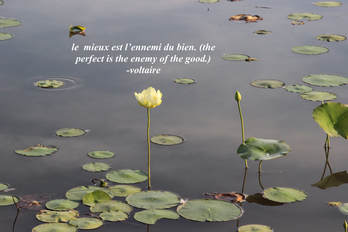 Photo by Kaitlyn O'Brien Photo by Kaitlyn O'Brien In June of this year I traveled to California to take a five-day Yoga for Athletes Teacher’s training. The training was held at Multiversity 1440 and was taught by Sage Rountree. As part of the training we spent some time discussing each of our goals as yoga teachers. This dialogue resurrected my own self-postponed idea of wanting to publish a yoga website. I’ve had this idea for quite a long time yet still it was not a reality – why? For one thing I am completely technologically challenged. But on a deeper level my pattern of wanting to be "perfect" I'm sure was a factor. Sage Rountree offered this concept of not letting perfect get in the way of good enough and it really resonated. Many of us can roadblock ourselves when we mistakenly approach our ideas, projects, or even yoga poses from this preconceived bias of “perfection.” Most people, places, things are not perfect and nor do they need to be. Progress rather than perfection is a much better plan. Skills like problem solving, trial and error lead us forward. Most of the time we take a few steps forward and a few steps back. We learn, we explore, we investigate, we grow. Practice makes us perfect (or good enough)… B.K.S. Iyengar said “Change leads to disappointment if it’s not sustained. Transformation is sustained change and it is achieved through practice." So we practice. We practice and work on the things that intimidate or challenge us on and off the mat and we transform. |
AuthorA yoga teacher since 2008, I am passionate about yoga (of course) wellness, good food and books. I love nature, sunshine, and seek beauty, truth, and peace. Archives
September 2020
Categories |

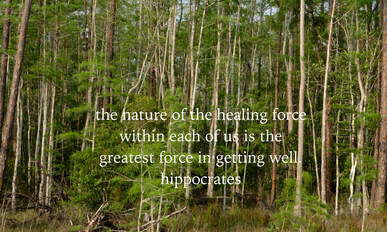
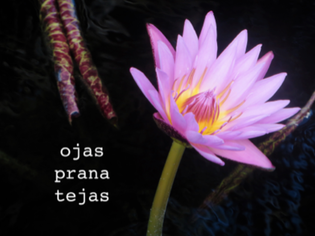
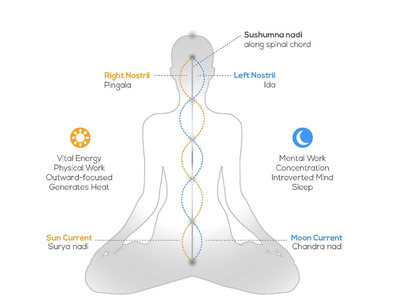
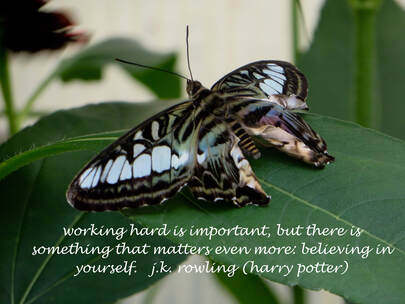
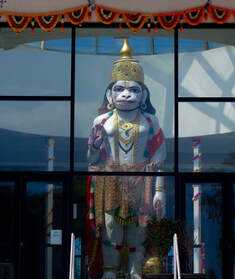

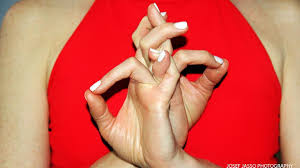
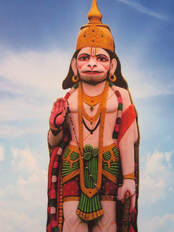
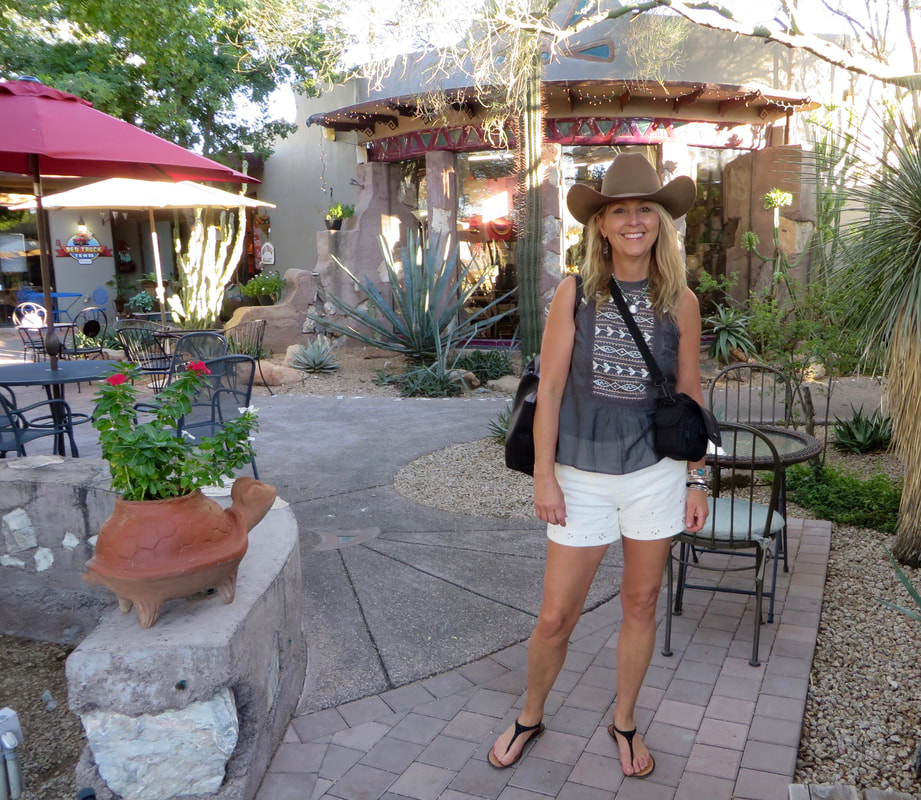
 RSS Feed
RSS Feed